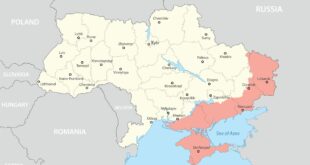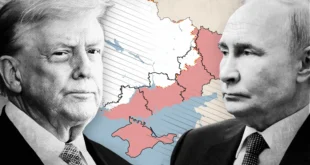China’s increasing overcapacity in cleantech manufacturing has heightened tensions with the West, prompting concerns among policymakers in Washington and European capitals.
With President Biden’s announcement of a broad series of tariffs aimed at stemming the flood of goods imported from China and protecting American workers and businesses, Washington has opened a new front in the U.S.-China trade war. Senior U.S. officials have warned that attempts to support a domestic clean energy industry are facing challenges from a flood of cheaper Chinese exports, which place the United States at a competitive disadvantage. Similarly, the European Union (EU) already has in place a slew of active probes into alleged Chinese anti-competitive behavior.
China has rapidly emerged as a green-tech manufacturing powerhouse. Wood Mackenzie’s research indicates that China is poised to dominate over 80 percent of the global manufacturing capacity for polysilicon, wafers, cells, and modules between 2023 and 2026. As per Bloomberg data, China currently holds a commanding 60 percent share of the global EV fleet, supported by the world’s most expansive charging infrastructure worldwide. According to the International Energy Agency Global EV Outlook 2024, China accounted for over 60 percent of global electric vehicle (EV) sales in 2023. During the same year, EV productionsoared by approximately 36 percent to exceed 9.6 million units. As reported byChina’s state media, the nation’s lithium-ion battery sector also experienced robust growth in 2023, marked by a 25 percent year-on-year rise in total output. Additionally, exports of these batteries soared by 33 percent compared to the previous year.
China’s rapid buildout of its green energy industry has been powered by consistent and extensive government backing. In addition to the enormous subsidies and a protected home market, Chinese producers have also benefited from preferential access to critical raw materials, forced technological transfers, and less domestic red tape than their foreign competitors. Starting with the 4 trillion RMB stimulus plan in 2008 to combat the global financial crisis and continuing with the launch of the Made in China 2025 strategy in 2015, Beijing’s policy drive has played a pivotal role in establishing an integrated industry supply chain. This, coupled with low labor costs and a vast domestic market, has provided Chinese companies with a substantial competitive advantage over their rivals.
Beijing has designated the “New Three” sectors of solar, EV, and lithium-ion batteries sectors—emerging industries in which the U.S. and EU are also competitors—as China’s key economic growth engines. The China National People’s Congress (NPC) wrapped up its session in March 2024 with a clear emphasis on industrial policies favoring high-tech sectors while providing minimal fiscal support for household consumption. This approach is expected to worsen the existing imbalance between domestic supply and demand. The resulting surplus production may overflow into global markets, contributing to an expanding trade surplus and potential disruptions to industrial systems in other countries. In fact, for some time now, China has been exporting its surplus capacity in solar panels. Now, a similar trend is underway with Chinese-made batteries and EVs.
Of course, policy-driven capacity expansion in China is not new. Nor are Western concerns and responses to it. During previous episodes of overcapacity, the proliferation of inexpensive Chinese exports escalated trade tensions and prompted various anti-dumping investigations, notably the European Union’s scrutiny of Chinese steel in 2016. The same year, Washington levied steep anti-dumping and anti-subsidy tariffs on Chinese steel.
However, the heightened concerns in Washington and Brussels about Chinese overcapacity are unique this time around. In contrast to the initial “China shock” during the early 2000s, which was characterized by a surge in imports of inexpensive Chinese goods that maintained low inflation but eroded local manufacturing jobs, the current concern among U.S. and European officials revolves around the potential inundation of global markets by higher-value industries. These sectors are considered pivotal for maintaining technological leadership. Both the Biden Administration’s Inflation Reduction Act (IRA) and the European Commission’s Green Deal stress the importance of driving their green transitions through their domestic manufacturing sectors rather than depending on inexpensive foreign suppliers like China. There is apprehension that companies in the U.S., Europe, and non-China emerging markets may never gain traction in these critical sectors of the global energy future while contending with highly subsidized Chinese rivals.
The Growing Backlash Against Chinese Overcapacity
Early this year, American officials put Beijing on notice that the United States and its allies will take action if China seeks to resolve its industrial overcapacity problem by flooding international markets. Treasury Secretary Yellen criticized Chinese overcapacity for “distort[ing] global prices and production patterns and hurt[ing] American firms and workers, as well as firms and workers around the world.” During her recent four-day visit to Beijing, Yellen conveyed U.S. concerns about and sought to persuade Chinese officials to rein in excess capacity for EVs, solar panels, and other clean energy technologies that might crowd out American and other foreign manufacturers.
Beijing has downplayed Western worries about cleantech overcapacity.Addressing the press on the outcomes of top-level discussions involving Secretary Yellen and Chinese officials, Deputy Finance Minister Liao Min stated: “So-called ‘overcapacity’ is a result of market mechanisms at work. Supply-demand imbalances are common and can occur in any market-based economy. Addressing these issues primarily requires the market to adjust in accordance with market laws.”
Pressed by German Chancellor Olaf Scholz during the latter’s visit to China in April, President Xi Jinping also dismissed EU complaints regarding overcapacity,insisting “China’s export of electric vehicles, lithium batteries, and photovoltaic products has not only enriched global supply and eased global inflationary pressure but also made important contribution[s] to the global response to climate change and the green and low-carbon transition.” However, Scholz did not seem persuaded, saying, “Unilateral economic policy decisions in China are creating major structural difficulties for companies in Germany and Europe.”
Elsewhere, Chinese officials have complained that critics are politicizingoverproduction and trade matters. Foreign Ministry spokesperson Lin Jian labeled the overcapacity narrative “a complete fallacy.” State media have taken an even stronger stance, equating Western references to “Chinese overcapacity” as “another Sinophobic catchphrase.” They point out Western subsidies for the EV industry as evidence of double standards and argue that the real problem lies in the “comparative inefficiencies” of the United States and Europe.
From Beijing’s vantage point, “overproduction” does not merely signify an excess of goods. Chinese authorities are more focused on the risk of intensified and chaotic competition, which could result in numerous unprofitable enterprises. Additionally, Beijing worries about excessive industrial capacity, which results in factories operating well below their potential.
However, the EU is pushing back against China’s alleged anti-competitive trade practices and industrial overcapacity, launching anti-subsidy investigations into Chinese exports of EVs, wind turbines, and solar panels. In March, the European Commission said it had found “sufficient evidence” of state subsidies and hinted at the possibility of provisional tariffs as early as July. Chinese-manufactured EVs are already subject to a 27.5 percent tariff imposed by the Trump administration in 2018, which effectively has kept them out of the U.S. market. The United States and the EU are not alone in launching investigations into the alleged dumping of Chinese industrial goods and in taking steps to protect domestic industries from Chinese exports. Brazil, India, Mexico, Thailand, and South Africa have all joined the backlash.
Beijing is determined to prevent trade barriers from undermining its EV industry, which it views as crucial for achieving long-term economic and foreign policy objectives. During a roundtable meeting held in Paris in April attended by EU and Chinese EV company officials, Commerce Minister Wang Wentao made clear that his government will not back down in the face of tariffs, stating that “[t]he rapid advancement of Chinese EV companies is propelled by technological innovation, integrated supply chains, and market competition, not subsidies” and pledging that Beijing will “… actively support companies in safeguarding their legitimate rights and interests.”
The Coming Clash
The global race to lead in green technologies is intensifying. The emergence of China’s New Three industries, alongside others heavily subsidized by the state, is bringing to the forefront a conflict between the Chinese economic system and the market-driven capitalism prevalent in developed countries. The strategic focus on industry and advanced manufacturing is central to China’s economic strategy. President Xi Jinping’s recent remarks, emphasizing the concept of “new productive forces,” leave no room for doubt: China is poised to invest significantly in future emerging industries.
According to a report by the Rhodium Group, Beijing’s adoption of supply-side policies to drive growth during and after the COVID-19 pandemic is a systemic issue that is not limited to specific sectors and could escalate into a trade dispute with the global community. In fact, China’s green-tech manufacturing boom is raising concerns regarding excess capacity, marked by accusations that overproduction stems from a “predatory” strategy that is leading to the erosion of the world’s manufacturing sector in support of assertive Chinese mercantilism. In response, countervailing subsidies and protectionist barriers are on the rise worldwide.
Unlike the “shock” of the early 2000s, the United States and its Western allies now perceive China as their main economic rival and geopolitical adversary. Washington and Brussels have joined Beijing in an explicit embrace of industrial policies and are actively “de-risking” their supply chains by seeking alternative sources for key products and imposing stricter investment screening measures on Chinese companies to address national security considerations.
 Geostrategic Media Political Commentary, Analysis, Security, Defense
Geostrategic Media Political Commentary, Analysis, Security, Defense





